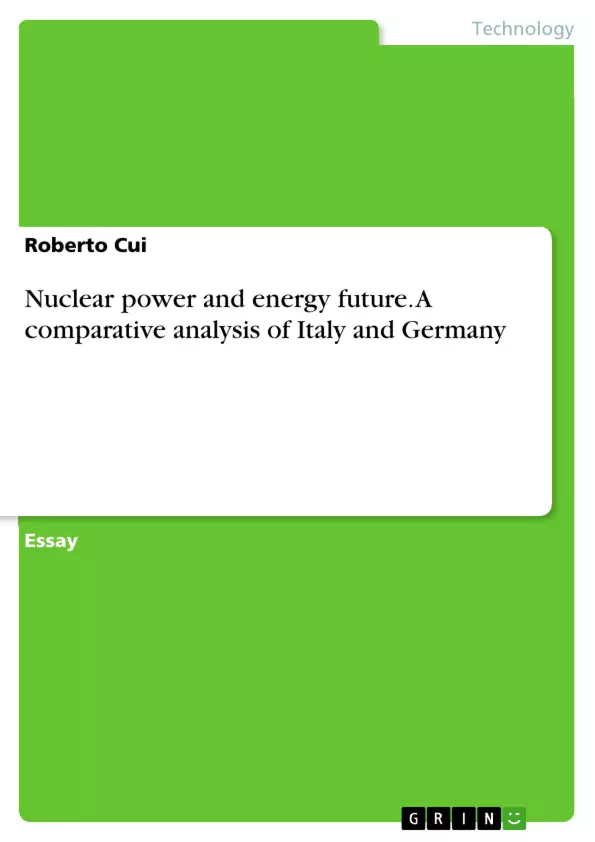In recent times, the European institutions have been increasingly recognizing, on the one hand, the gravity of the environmental concerns related to energy (in the steps of production, consumption, and waste management and disposal), and, on the other hand, the importance of reducing the energy imports dependence of the majority of the Member countries.
These recognition has led to remarkable legislation efforts, culminated in the enactment of the so-called Third Energy Package, adopted in July 2009, which, while maintaining the classic European Union approach based on liberalization and improvement of competition, also embraced the new points of view of environment, consumer protection and security of supply.
As acknowledged by the EU itself, the most ambitious points of its legislation instruments are those related to the so-called 20-20-20 objectives to meet by 2020: reducing EU greenhouse gases (GHG) emissions by 20% from 1990 levels, raising the shares of EU energy consumption produced from renewable sources to 20%, improving the EU’s energy efficiency by 20%.
The above-listed points are means to achieving a low-carbon energy structured economy for the Internal European Market. From this starting point, through a brief compared analysis between the Italian and German energy factual and legal frameworks, it is possible to outline the main critical points regarding not only the European energy policy goals, but, more broadly, the ties between energy, economics, society, and the environment.
The focus, here, is on the most recent changes affecting the Italian and German nuclear power sectors. For such purpose, after an overview of the countries’ energy backgrounds (indispensable to understand the nuclear developments in the light also of the other energy resources), the likely future scenarios and the possible alternatives to meet the EU goals will be discussed, on the basis of a variety of sources.
Inhaltsverzeichnis (Table of Contents)
- Introduction
- EU context and national policies
- The Italian and German energy consumptions
- Italy: Energy mix and nuclear power
- Germany: Energy mix and nuclear power
- The EU Third Energy Package
- Italy: Nuclear power and the future scenarios
- Germany: Nuclear power and the future scenarios
- Conclusions
Zielsetzung und Themenschwerpunkte (Objectives and Key Themes)
This work examines the recent developments in the Italian and German nuclear power sectors, comparing the national energy policies and legal frameworks of both countries. It aims to analyze the impact of these developments on the achievement of the EU's energy policy goals, particularly the 20-20-20 objectives.
- The EU's energy policy and the 20-20-20 objectives
- The role of nuclear power in the energy mix of Italy and Germany
- The legal and regulatory frameworks governing nuclear power in both countries
- The potential for alternative energy sources to meet the EU's energy goals
- The relationship between energy, economics, society, and the environment
Zusammenfassung der Kapitel (Chapter Summaries)
- Introduction: This chapter introduces the topic of nuclear power in Italy and Germany, setting the context for the comparative analysis that follows. It highlights the importance of the EU's energy policy and the 20-20-20 objectives in shaping national energy strategies.
- EU context and national policies: This chapter provides an overview of the EU's energy policy and its key legislation, including the Third Energy Package. It discusses the EU's goals for reducing greenhouse gas emissions, increasing renewable energy production, and improving energy efficiency.
- The Italian and German energy consumptions: This chapter presents a comparative analysis of the energy consumption patterns in Italy and Germany, highlighting the key differences and similarities between the two countries.
- Italy: Energy mix and nuclear power: This chapter examines the Italian energy mix, focusing on the role of natural gas and the country's dependence on imports. It also discusses the history and current status of nuclear power in Italy.
- Germany: Energy mix and nuclear power: This chapter examines the German energy mix, highlighting the country's reliance on coal and its commitment to phasing out nuclear power. It explores the legal and regulatory framework governing nuclear power in Germany.
- The EU Third Energy Package: This chapter provides a detailed analysis of the EU's Third Energy Package, focusing on its key provisions and their implications for national energy policies.
- Italy: Nuclear power and the future scenarios: This chapter explores the potential for nuclear power in Italy's future energy mix, considering the country's current energy policy and the potential for alternative energy sources.
- Germany: Nuclear power and the future scenarios: This chapter examines the future of nuclear power in Germany, considering the country's decision to phase out nuclear power and the potential for alternative energy sources.
Schlüsselwörter (Keywords)
This work focuses on the key topics of nuclear power, energy policy, and environmental sustainability, with a specific focus on the Italian and German contexts. The main themes include the EU's 20-20-20 objectives, the Third Energy Package, the role of natural gas and renewable energy sources, and the legal and regulatory frameworks governing nuclear power. The analysis also considers the relationship between energy, economics, society, and the environment.
- Quote paper
- Roberto Cui (Author), 2013, Nuclear power and energy future. A comparative analysis of Italy and Germany, Munich, GRIN Verlag, https://www.grin.com/document/282685



